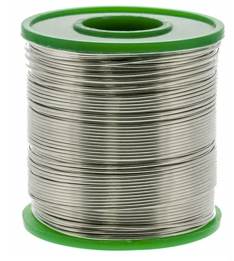PCB solder is a type of fusible alloy used to create a strong, conductive bond between component leads and the traces on a printed circuit board (PCB). The process of using the solder to connect these elements is known as soldering.
The composition of solder varies, but it typically includes elements such as tin, lead, silver, and copper. The most common type used in electronics was traditionally a 60/40 (tin/lead) blend, but due to health and environmental concerns related to lead, lead-free solders (usually containing tin, silver, and copper) have become more prevalent.
Solder comes in several forms for different applications:
Wire Solder
This is the most common form, used in hand-soldering applications. It often has a core of flux, which helps clean the components and improve the flow of the solder when heated.

Real of Wire Solder
Solder Paste
This is a mixture of small solder particles and flux used in reflow soldering, a common technique in surface-mount technology (SMT). The paste is applied to the PCB, the components are placed on top, and the whole assembly is heated in a reflow oven to melt the solder and create the electrical connections.
Solder Bar
Used in wave soldering machines, which are typically used for mass production of PCBs. The bar is melted and a "wave" of solder is used to solder all components to the PCB simultaneously.
It's important to note that solder doesn't just glue the components onto the board—it creates an electrical connection between the component and the circuit traces on the PCB. This is essential for the functionality of any electronic device.